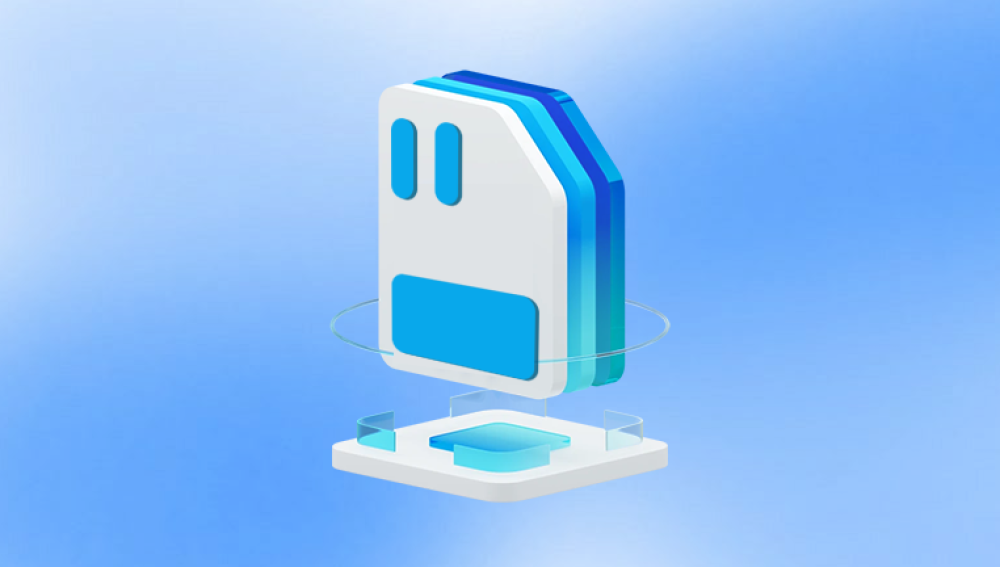When a photo is deleted from a memory card, it's not immediately wiped from the card. Instead, the space it occupies is marked as available for new data. Until that space is overwritten, the deleted photo can potentially be recovered. This is why it's crucial to stop using the memory card as soon as you realize photos are missing.
Common Scenarios That Lead to Photo Loss
Accidental Deletion: Deleting photos manually from the camera or computer.
Formatting the Memory Card: Reformatting deletes all stored data.
Corrupted Memory Card: File system errors or malware can render photos inaccessible.

Card Removal During Transfer: Interrupting file transfer between card and computer.
Device Malfunction: Camera or phone hardware issues causing file system corruption.
Initial Precautions Before Recovery
Stop Using the Card Immediately: Avoid taking new photos or adding files.
Do Not Reformat: Reformatting can overwrite recoverable data.
Use a Card Reader: Connect the memory card to a computer via a card reader for safer access.
Methods to Recover Deleted Photos
1. Use Built-In Operating System Tools
Some operating systems offer built-in tools that can help in simple cases of accidental deletion:
Windows File History or Previous Versions
Mac Time Machine
However, these only work if your card had previously been backed up using those systems.
2. Data Recovery Software
Drecov Data Recovery
Drecov Data Recovery is an intuitive and reliable solution designed to help users retrieve lost or deleted photos from memory cards and other storage devices. Whether you've accidentally deleted your pictures, formatted your memory card, or encountered a corruption issue, Drecov Data Recovery offers a streamlined, user-friendly process that can bring your precious memories back.
One of the key strengths of Drecov Data Recovery lies in its powerful scanning algorithms. It supports a wide range of photo file formats, including common types like .JPG, .PNG, and professional formats such as .RAW, .NEF, .CR2. and more. With deep scan capabilities, it can locate lost images even after the card has been formatted or partially overwritten.
3. Recover Photos from Cloud Backups
If your photos were synced to a cloud service before deletion, you might be able to recover them:
Google Photos: Check the "Trash" folder (retained for 30 days).
iCloud: Use the "Recently Deleted" album.
OneDrive, Dropbox: Look in deleted files or version history.
4. Check Camera's Internal Memory
Some cameras save duplicates or temporary files in internal memory. Connect your device directly and browse for hidden files or temporary folders.
5. Professional Data Recovery Services
When all else fails, a professional service may be necessary—especially if the card is physically damaged or highly corrupted. Companies like:
DriveSavers
Ontrack
Secure Data Recovery
These services use advanced tools to extract data in lab environments. This option can be expensive, but it may be the only way to retrieve critical photos.
How to Increase Chances of Successful Recovery
Act Quickly: The sooner you begin the recovery process, the better.
Avoid Writing New Data: Don’t use the card until recovery is complete.
Use Reliable Software: Choose programs with strong reputations and good reviews.
Recover to a Different Drive: Never restore photos back to the same card.
Preventative Measures for the Future
Regular Backups: Use cloud services or external drives to back up important photos.
Use High-Quality Memory Cards: Cheap cards are more prone to failure.
Safely Eject Cards: Avoid abrupt removal from cameras or readers.
Update Device Firmware: Manufacturers release updates to fix bugs.
Label and Organize Cards: Avoid confusion and accidental formatting.
Commonly Asked Questions (FAQ)
Q: Can I recover photos after formatting the card?
A: Yes, if the card hasn't been used post-formatting, recovery software can often retrieve most or all photos.
Q: Are deleted RAW image files recoverable?
A: Yes, most advanced tools support .RAW, .NEF, .CR2. and other proprietary formats.
Q: Is recovery possible if the card is not recognized?
A: Sometimes. Try a different card reader or computer. If still unrecognized, professional help is advised.
Q: Will recovery software damage my card?
A: Reputable tools perform read-only scans and are safe to use.
Q: What’s the success rate of recovery?
A: It varies—higher if the card is intact and no new data has overwritten the deleted files.
Sample Case Study
A wedding photographer accidentally formatted a 64GB SD card after transferring what he thought was all content. Later realizing some key shots were missing, he:
Immediately stopped using the card.
Inserted it into a PC using a high-speed card reader.
Ran Stellar Photo Recovery, which identified over 900 .RAW files.
Successfully restored 95% of the original shots.
This case underlines the importance of acting fast and using professional-grade tools.
Losing cherished photos from a memory card can feel like a disaster, but it doesn’t have to be permanent. With the right knowledge, tools, and quick action, many deleted images can be successfully recovered. From DIY software solutions to professional services, there’s a recovery path suitable for nearly every situation. Just remember to stop using the card immediately, use reliable recovery methods, and plan ahead with routine backups and high-quality memory equipment. These simple habits can help ensure your precious memories remain safe and accessible for years to come.




